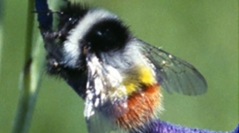

 European Journal of Taxonomy
890 (165) - Pages 165-183
European Journal of Taxonomy
890 (165) - Pages 165-183Bumblebees (Bombus Latreille, 1802), because of their large body size, bright colours and activity at times and places that coincide with biologists, are an example of a group of insects that is particularly well represented in museum collections. This is important if taxonomic revisions are to achieve greater comparability among species. Bumblebees have also attracted particular attention because they are especially ecologically and economically valuable for pollination in north temperate regions, where they are now becoming increasingly threatened. I argue that the what, the where, and the how of effective conservation management may be informed by understanding the divergent characteristics that have affected their biogeographical past: by helping us to see ‘the woods’, not just ‘the trees’, of their habitat needs. Identifying suitable habitat should be part of reconstructing historical biogeography within taxonomic revisions. For bumblebees, for example, biogeographical analysis associates major taxonomic groups either with flower-rich lowland grasslands or with flower-rich montane grasslands, highlighting their contrasting requirements for: nest sites, flowers of different depths, pollen-plant families, and especially the differing importance of early spring and late summer flowers for breeding success. This broad view of species groups helps filter the less important idiosyncrasies from local case studies in order to focus conservation actions.